|
On Spitsbergen, we are studying combined effects of goose grazing and global warming on an arctic tundra. The project
is called FRAGILE and is financed by the
European Community. At the beginning of the season,
Maarten Loonen visited the field site and made the following report.
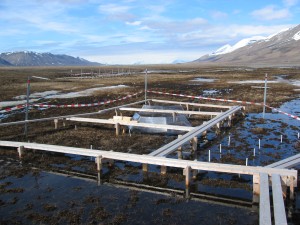 |
The state of the vegetation plotsThe field site in Adventdalen on 12 June 2004. Two blocks in the wet vegetation type are shown. The
vegetation is just snowfree and there is still a lot of water from the river flowing past the plots. The board walks
around the plot make sure that the vegetation is not trampled by reserachers. |
| The next six pictures are an example of the various treatments in block W6. There are 3 levels of grazing and two levels
of temperature per block. The pictures are taken on 12 June 2004.
The vegetation has just appeared from under the snow. Grazing treatments were applied twice in the summer of 2003.
The effect is still vissible. The rings in the vegetation are remains of the carbon flux measurements. |
| Ungrazed |
Normal grazing pressure |
Heavy grazing pressure |
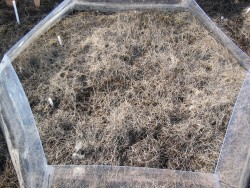 |
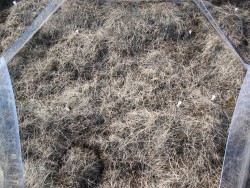 |
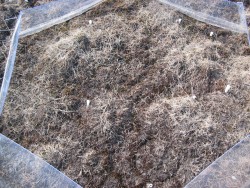 |
Enhanced temperature
By placing open top chambers (OTC) on the vegetation,
the temperature is enhanced a few degrees, simulating global warming. |
| UT |
LT |
HT |
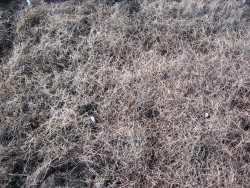 |
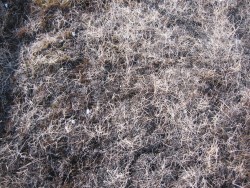 |
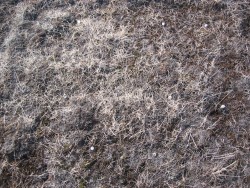 |
Ambient temperature
These plots are exposed to normal weatherconditions |
| UA |
LA |
HA |
Geese for the grazing treatmentI had hoped to bring 8 yearling barnacle goose to the site to graze the plots.
They had been raised in the Netherlands, adjusted to people and trained to graze in cages of 2*2 m2.
After a long careful procedure, the Norwegian authorities allowed me to bring them to Spitsbergen.
Unfortunately, two days before departure they appeared not fully free of germs and the transport was cancelled.
This picture tells it all. An empty pen were the geese could have been adjusting to the new environment.
We will be too late for the first grazing treatment, but hope to perform the second grazing treatment
with geese caught on Spitsbergen. All my collegues are very supportive and not all is lost,
but at the moment that I took the picture I felt very sad, tired and disappointed.
Everything could have been so perfect. |
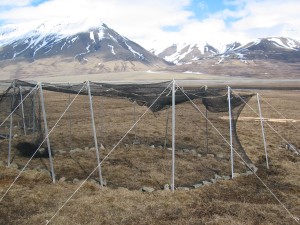 |
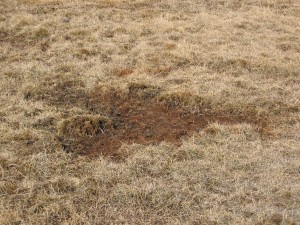 |
Goose grubbingIn early spring, pinkfooted geese arriving on Spitsbergen are feeding on underground
plantreserves. Here you see a small patch which has been grubbed. Dries and Theresa have collected goose droppings
and analysed the diet.
The grubbing has proven a method of feeding which
destroys vegetation along the Hudson Bay in Canada. Is this also true on the arctic tundra of Spitsbergen.
The remaining plants could be stimulated by the faster spring thaw? An experiment should help to study the plant
respons to grubbing. |
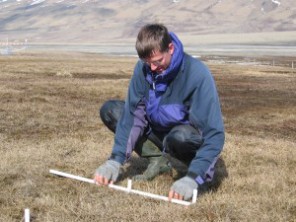 |
RenÚ van der Wal is setting up the grubbing experiment. He looks for a moderately grubbed site with nearby ungrubbed
vegetation, which seems to resemble the grubbed site before grubbing. In this ungrubbed vegetation he locates two similar plots.
One ungrubbed plot will be control, the other plot will be experimentally grubbed by RenÚ himself, mimicking goose grubbing.
Selecting a plot needs great care. You can see this in this movie (9Mb). |
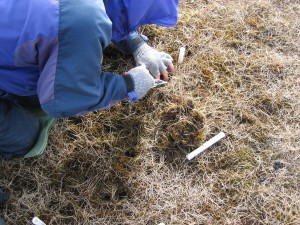 |
The experimental grubbing. Every 3 centimeters, an artificial hole is made in the vegetation and all underground vegetation is removed |
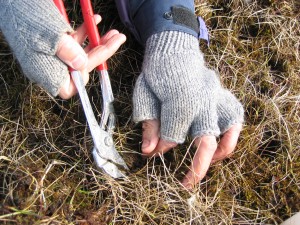 |
|
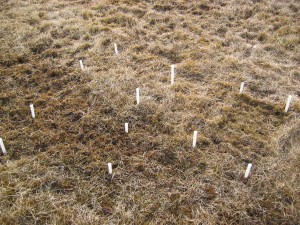 |
The end result. Three different plots. To the left in front you can see the natural grubbed plot. To the middle in the
back you can see the control plot. To the right in the front you can see the experimentally grubbed plot. About 60 gram
fresh weight of underground vegetation is removed.
Dries Kuijpers and I have been measuring depth of permafrost in the plots. The permafrost layer was on average 3 cm deeper in the naturally grubbed sites.
The closed vegetation deck is an insulation layer during spring thaw and delays the growing season of the rooted plants. |
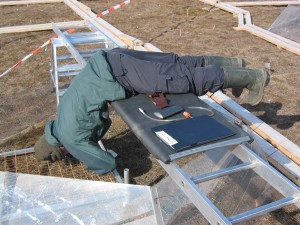 |
Measuring phenologyAlready, the phenology of the plants in the different treatments is monitored in detail. Here you see
Marc, hanging from a special construction so he does not damage the plots. He is counting emerging buds of Salix polaris.
On the right hand side you can see a picture of what he is observing. |
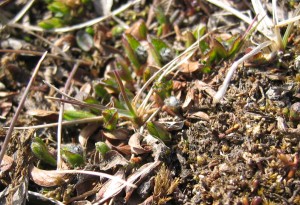 |
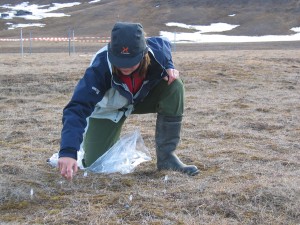 |
PhosphateGoose droppings are relatively rich in phosphate. This might be a stimulating nutrient on the arctic tundra.
We are studying the effect of phosphate additions to the tundra. To the left, Sophie is adding organic phosphate,
to the right Jani is adding inorganic phosphate to specific plots. Each group of plots has also controls and the effect on
the vegetation is measured. |
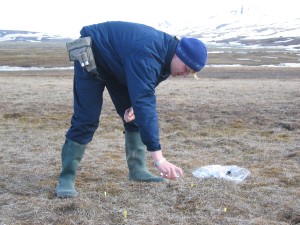 |
|

















